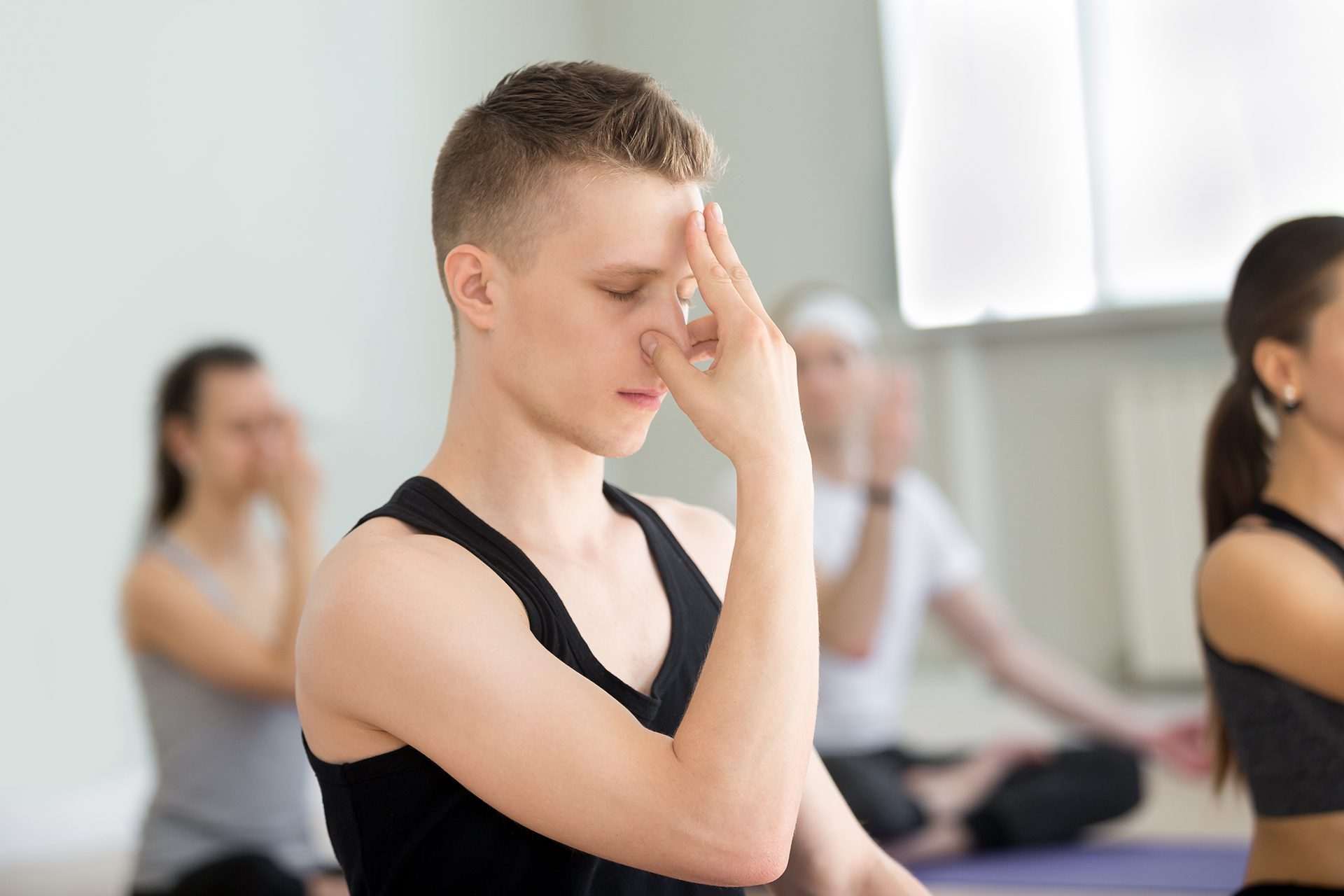Mindful Moments: The Power of Pranayama and Meditation in Yoga Practice
In the hurried chaos of modern life, finding moments of peace and tranquility has become increasingly vital for our mental, emotional, and physical well-being. Yoga, an ancient mind-body practice with roots in India, offers a holistic approach to achieve harmony and balance through the integration of various techniques, including asana, pranayama and meditation.
Yoga’s true essence extends far beyond the mat. At its core, yoga is a spiritual discipline that seeks to unite the mind, body, and spirit, guiding practitioners towards a state of inner peace and self-realization. The practice of asanas serves as a gateway to physical strength and flexibility, and in preparing the mind and body for the next limbs. It is through the integration of pranayama and meditation that one can unlock the transformative potential of yoga. In this article, we will explore the powerful benefits of pranayama and meditation in yoga practice, depicting how these practices cultivate mindfulness and self-awareness, and foster a deeper connection with the present moment.

THE ROLE OF PRANAYAMA
Pranayama, often referred to as the control or extension of the breath, lies at the heart of physical yoga practices. The breath serves as a bridge between the body and the mind, and by harnessing its power, practitioners can cultivate greater awareness, vitality, and clarity. Various pranayama techniques taught in a yoga teacher training course, such as Ujjayi (victorious breath), Nadi Shodhana (alternate nostril breathing), and Kapalabhati (skull shining breath), offer unique benefits like calming the mind, balancing the nervous system, removing dust particles and toxins, improving blood circulation and enhancing overall well-being, among others.
Pranayama serves as a potent tool for regulating the autonomic nervous system, which governs involuntary bodily functions such as heart rate, digestion, and stress response. By practicing conscious breathing techniques, individuals can shift from a state of sympathetic arousal (fight-or-flight) to parasympathetic dominance (rest-and-digest), promoting relaxation, mental clarity, and emotional stability. This shift in nervous system activation not only reduces the harmful effects of chronic stress but also fosters a sense of inner peace and equanimity.
Moreover, Pranayama cultivates mindfulness by anchoring awareness in the present moment. As practitioners try to harmonize their breath with movement (during asana practice) or engage in breath-focused meditation, they develop a heightened sense of attention and presence, transcending the fluctuations of the mind. This mindful awareness encourages a deep connection with the body, allowing individuals to observe sensations, thoughts, and emotions with non-judgmental awareness.
Specific Pranayama teacher training courses, such as Sampoorna Yoga’s 50-hour Pranayama TTC, will deep dive into different breathwork practices, the impact of practicing with retention (Khumbaka), the benefits and how each breathwork practice positively influences the physiological system.
THE TRANSFORMATIVE POWER OF MEDITATION
While Pranayama prepares the groundwork for meditation, it is through the practice of meditation itself that practitioners can delve into the depths of their inner being. According to Ashtanga’s Eight Limbs of Yoga, the sixth limb is Dharana, known as concentration. This is the first step to meditation where one’s focus is completely on an object. Gradually, practitioners move onto the next limb, Dhyana, known as Meditation. This stage involves focused attention and heightened awareness, leading to states of profound stillness, clarity, and insight. Just as a river flowing calmly, the mind attains serenity and lucidity through sustained meditation practice.
There are various forms of meditation within the yogic tradition, including mindfulness meditation, loving-kindness meditation, and mantra meditation, each offering unique pathways to higher potential, self-discovery and inner peace. Mindfulness meditation, in particular, emphasizes present-moment awareness and non-reactive observation of sensory experiences, thoughts, and emotions. By cultivating awareness, individuals find it easier to be accepting of situations and can break free from habitual patterns of perception and reactivity, finding refuge in the boundless expanse of the present moment.
Moreover, meditation encourages self-inquiry and introspection, enabling individuals to explore the nature of their minds and unearth layers of conditioned beliefs and identities. Through sustained practice, meditators develop insight into the impermanent, interdependent nature of existence, transcending the illusion of separateness and realizing their inherent interconnectedness with all beings. In a meditation teacher training you will learn how to guide students through an impactful meditation class, even if they are absolute beginners, such that they slowly grasp the practice and ability to sit in stillness.
INTEGRATION OF ASANA, PRANAYAMA, AND MEDITATION
Integrating asana, pranayama and meditation in your yoga practice offers unique benefits. It is this integration that promotes profound transformation and awakening. Asanas prepares the body for meditation by releasing tension, increasing flexibility, and cultivating physical strength and balance. In a certain sense, after physical exercise, the body and mind will more easily and effectively be still in meditation. Pranayama refines the breath, calms the mind, and enhances concentration, laying the foundation for deepening meditative states. By focusing on the breath, one can also deepen a posture or hold a posture with better ease. With the right breathing pattern during asanas, stamina also builds up gradually, making physical asana practice more effective. And meditation, the pinnacle of yoga practice, serves as the gateway to self-realization, offering glimpses into the timeless essence of our being.
The journey of yoga is a holistic and multidimensional path of self-discovery and inner transformation. By embracing the practices of pranayama, and meditation, individuals can awaken to the inherent wisdom, joy, and light that lies dormant within. As we cultivate mindfulness and compassion on the mat, we ripple these qualities out into the world, becoming agents of positive change and embodiments of peace. With the unison of the body, breath and mind, one mindful moment at a time, practitioners find themselves flowing with nature, effortlessly and in harmony.
YOGA ALLIANCE REGISTERED YOGA TEACHER TRAINING COURSES

Sampoorna Yoga Teacher Training School has been a registered international yoga school with Yoga Alliance, holding RYS-200, RYS-300, RYS-500, and YACEP designations since 2009. Its online and in-person Yoga Teacher Training Courses and Certifications are recognized and accepted worldwide, enabling all graduates to teach globally. Upon course completion, participants receive a 200-Hour, 300-Hour, or 50-Hour Yoga Teacher Training Certification, allowing registration as RYTs (Registered Yoga Teachers) with Yoga Alliance. Our Yoga Teacher Training Certificate Courses empower you to teach legally in any country, whether you choose to register with Yoga Alliance registration or not.

